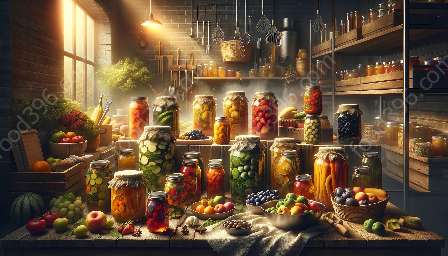Home canning and preservation are timeless techniques that allow people to store food for long-term use. This comprehensive guide covers the fascinating art of preserving food at home, including techniques, equipment, and safety guidelines.
Introduction to Home Canning and Preservation
Home canning and preservation are traditional methods of storing food by sealing it in airtight containers. This process allows food to be kept for an extended period, ensuring a secure and sustainable food supply. The art of canning and preservation has been practiced for centuries, with each culture adding its unique flair to the process.
Techniques for Home Canning and Preservation
There are several techniques for home canning and preservation, each suited to specific types of food. The most common methods include water bath canning, pressure canning, pickling, fermenting, and dehydration. Each technique offers unique benefits and can be used to preserve a wide variety of foods, including fruits, vegetables, meats, and even dairy products.
Water Bath Canning
Water bath canning is a simple and effective method for preserving high-acid foods such as fruits, jams, jellies, and pickles. By submerging jars of food in boiling water for a designated period, harmful microorganisms are destroyed, and a vacuum seal is formed, protecting the contents from spoilage.
Pressure Canning
Pressure canning is the recommended method for preserving low-acid foods such as vegetables, meats, and soups. The use of high pressure and temperature in a pressure canner ensures that all harmful bacteria, including spores, are eliminated, making the food safe for long-term storage.
Pickling
Pickling is a preservation technique that involves submerging food in a brine solution, which effectively inhibits the growth of spoilage microorganisms. Common pickled foods include cucumbers (pickles), beets, and various types of chutneys.
Fermenting
Fermentation is a natural process that involves the breakdown of sugars by bacteria and yeast. This preservation method creates an acidic and anaerobic environment, preventing the growth of harmful bacteria. Fermented foods, such as sauerkraut, kimchi, and kombucha, have become increasingly popular due to their unique flavors and health benefits.
Dehydration
Dehydration involves removing moisture from food, thereby inhibiting the growth of bacteria, yeasts, and molds. This method is commonly used to preserve fruits, vegetables, and herbs, resulting in lightweight and shelf-stable products that can be rehydrated when needed.
Equipment for Home Canning and Preservation
Proper equipment is essential for successful home canning and preservation. The following are some of the key items required:
- Canning Jars: Glass jars with airtight lids suitable for food preservation.
- Canner: A large pot with a rack designed to hold jars, used for water bath canning.
- Pressure Canner: A specialized pot designed for pressure canning, ensuring the safe preservation of low-acid foods.
- Canning Tools: Including jar lifters, funnels, and headspace tools for safe and efficient canning.
- Dehydrator: An appliance designed to remove moisture from food for dehydration.
- Fermentation Crocks: Containers specifically designed for fermenting foods.
- Pickling Kits: Including containers, spices, and guides for pickling various foods.
Safety Guidelines for Home Canning and Preservation
Adhering to safety guidelines is crucial for successful home canning and preservation. Key principles include:
- Use Fresh Ingredients: Fresh, high-quality ingredients ensure the best results and reduce the risk of spoilage.
- Follow Trusted Recipes: Use reliable and tested recipes from reputable sources to ensure safe preservation.
- Adhere to Processing Times: Proper processing times and methods are critical for destroying harmful microorganisms.
- Maintain Cleanliness: Sanitize equipment, work surfaces, and hands to prevent contamination.
- Check for Seal Integrity: Properly sealed jars indicate successful preservation, while unsealed or bulging lids may indicate spoilage.
- Store Properly: Store preserved foods in a cool, dark, and dry environment to maintain quality and safety.
- Stay Informed: Keep up to date with the latest canning and preservation guidelines and techniques to ensure safe practices.
Benefits of Home Canning and Preservation
Home canning and preservation offer numerous benefits, including:
- Cost Savings: Bulk purchasing and preserving seasonal produce can lead to significant savings on grocery bills.
- Food Security: Building a stock of preserved foods provides a reliable food supply, especially during times of scarcity or emergency.
- Customization: Preserving food at home allows for customization of flavors and ingredients according to personal preferences.
- Appreciation of Tradition: Engaging in the age-old practice of canning and preservation connects individuals to cultural traditions and self-sufficiency.
- Environmental Impact: By reducing food waste and reliance on commercially processed foods, home canning and preservation contribute to environmental sustainability.
Conclusion
Home canning and preservation are valuable skills that allow individuals to enjoy the benefits of fresh, seasonal produce throughout the year while promoting food security and self-sufficiency. By following established techniques, investing in quality equipment, and prioritizing safety, anyone can experience the joy of preserving food at home.

